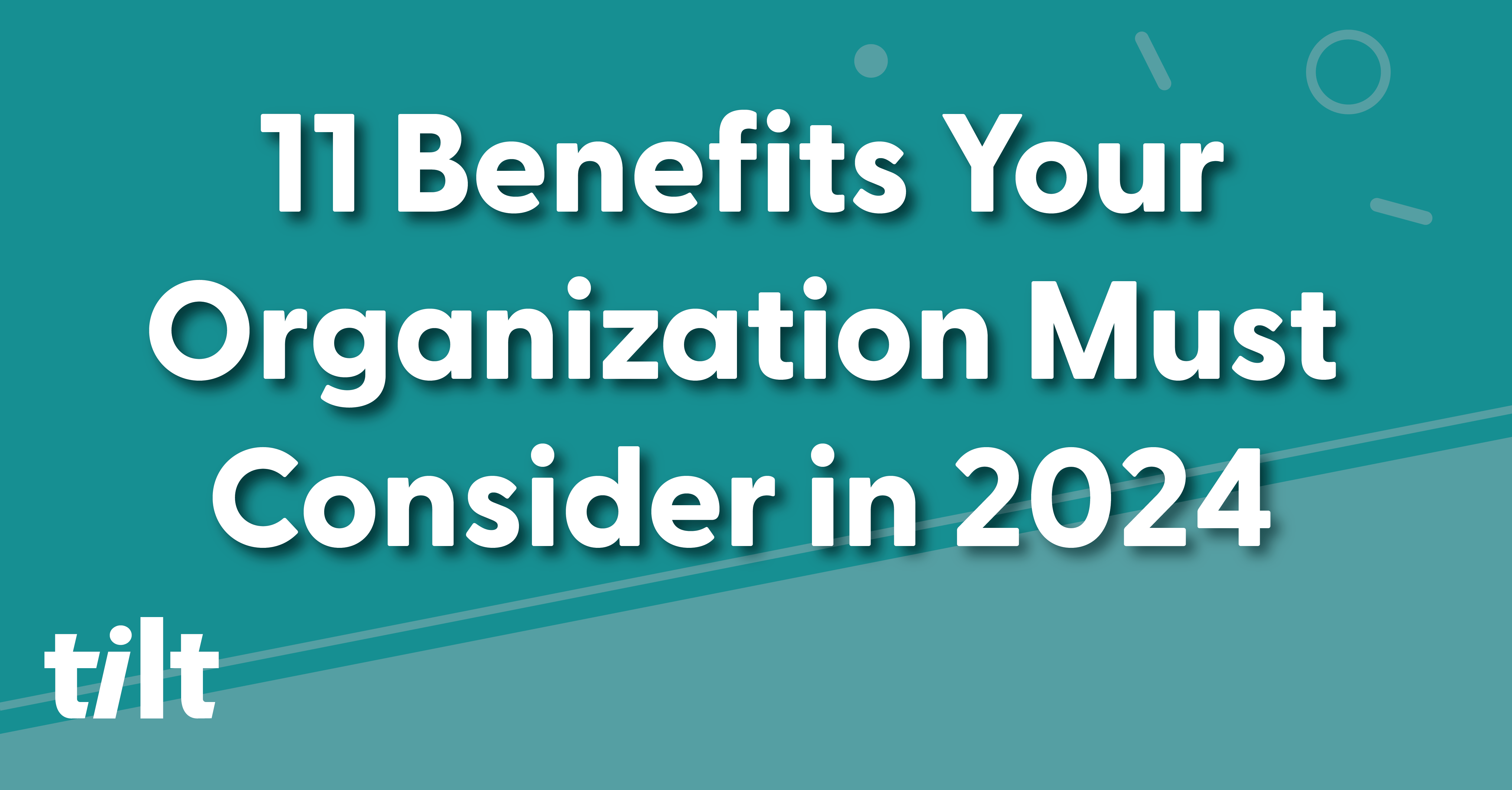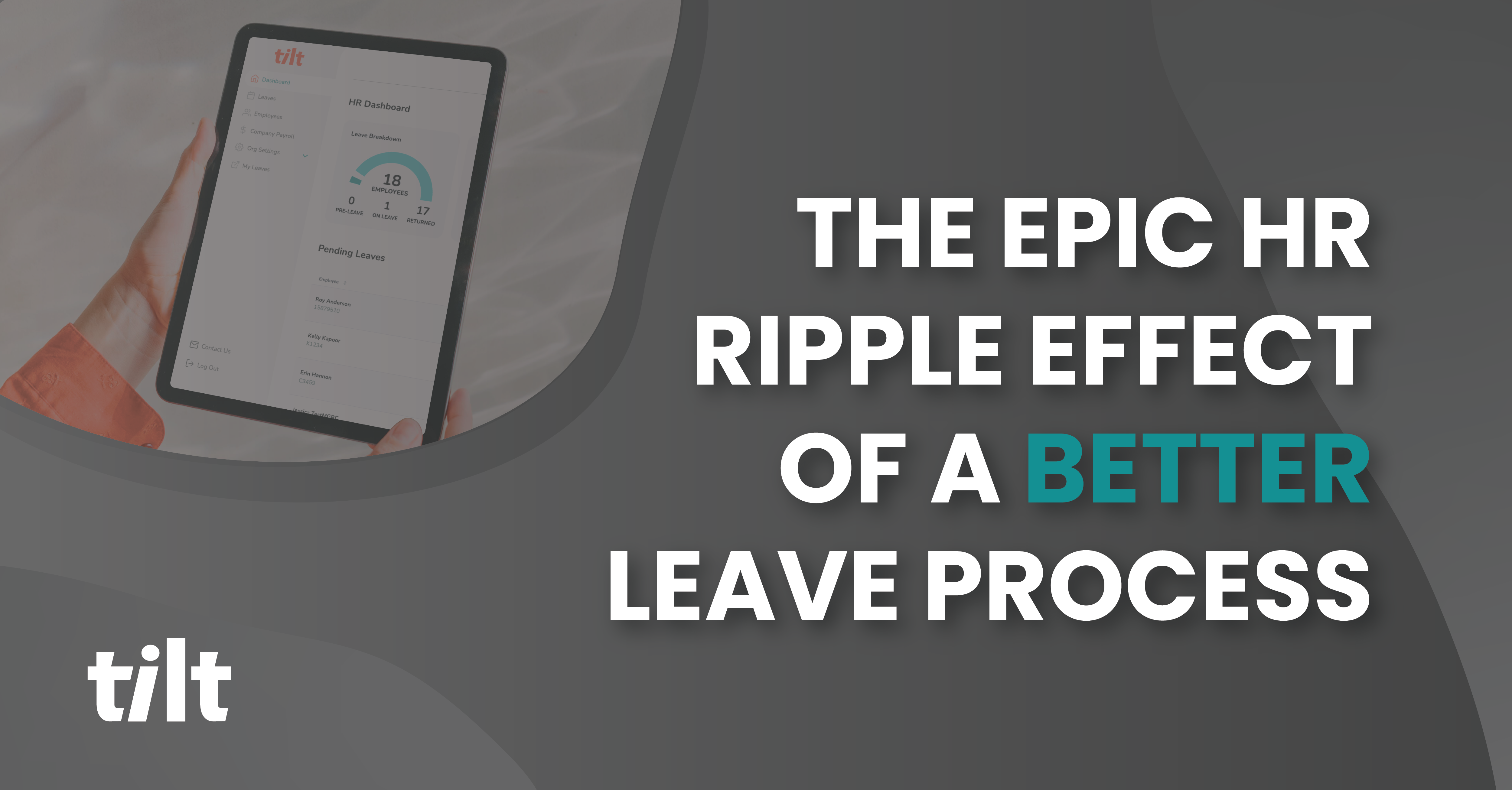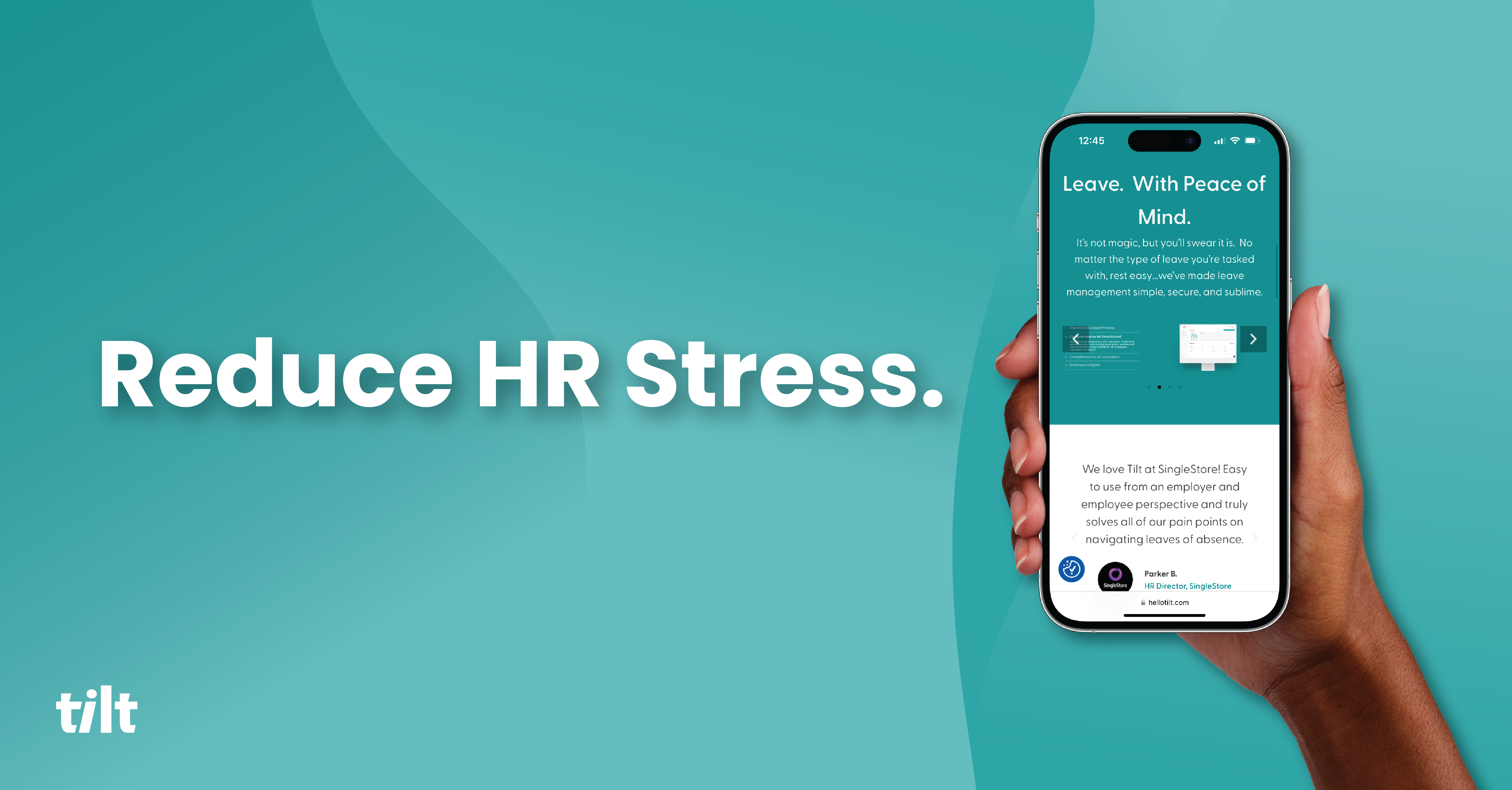Opening scene dream sequence: It’s a cool fall morning and you’re the head of a small (insert obligatory “yet mighty”) People Ops team, and on the floor of your high-rise corner office overlooking the ocean you’ve got a big, shiny treasure chest filled with every imaginable benefit you could possibly offer your employees.
You pull out a card that has, “Giraffe Rides and Boozy Oreo Milkshake Thursdays” scrawled across it.
“I must be dreaming,” you say softly aloud to nobody in particular.
“YOU ARE,” says a booming voice that sounds eerily like your 8th-grade math tutor. “HR in a corner office wasn’t enough of a giveaway?”
Understandably startled, you blink your eyes open back to reality, and back to your scrawling queue of bolded emails you’ve yet to get to. The most freshly minted with a calendar invite and the subject line of:
⃞ Sarah McGee Budget and Benefits Happy Fun Time – Let’s chat 2024 bene… 8:17am
You’ve given this particular topic an incredible amount of thought given the seismic shift the workforce has experienced over the last few years. The business objective hasn’t changed as leadership has been looking for ways to attract more talent, keep the talent you’ve attracted, and do so within (or preferably under) budget.
You know that giraffe rides are likely out of the question, and probably aren’t that important to your employee population anyway, so what should your organization offer in 2024?
Benefits HR Should Consider in 2024
1. Return-to-Office Benefits
A return-to-office benefit could be a game-changer for your employees. A lot of employees have grown fond of the many conveniences of working from home over the last few years. Not only that, they were spending less time in their car, pumping less gas and forking over fewer funds for food.
If your organization is transitioning back to in-person work, offering a compelling benefit can ease this shift. By providing commuter benefits, like pre-tax debit cards for parking or public transportation, child- and pet-care stipends and in-office perks like free meals, gift cards or team-building events, you can help make the prospect of returning to the office more palatable. It’s imperative that employees don’t feel like their quality of life is decreasing at your organization from one year to the next, so providing benefits to show them that you understand how the ask to return to the office may feel to them.
2. Mental Health Leave & Support
It’s unclear when we’ll truly know the full effects that the last few years have had on our collective psyche, but what has become clear is the benefit of supporting employee mental health. The stigmas around mental health exist only in a bygone era. Competitive organizations can no longer overlook supporting employee well-being through offering a Mental Health Leave of Absence benefit or other mental health offerings.
A study by One Medical found that 64% of employees struggle with mental health, but only 19% take advantage of their company’s benefits. Mental Health education and training, stigma reduction within the workplace, and offering tools, apps, or access to mental health professionals can do wonders for improving and supporting employee mental health.
What’s in it for the organization aside from being able to sleep at night knowing you’re good humans who care for other humans? Improved productivity, improved retention rates, and decreased healthcare and disability costs to name a few.
3. HR AI & Automation
HR AI and Automation: This is one of those win-win benefits for HR teams and employees alike. Using technology to automate your administrative processes also improves the work life for your people. By allowing employees to self-serve eliminates clunky and frustrating processes that can reduce overall workplace satisfaction. We outline some technologies here, but in 2024 you can use technology for:
Efficient Onboarding
Personalized Learning and Development
Leave of Absence Support
Faster Issue Resolution
Recruitment and Talent Acquisition Experience
Performance Management
Predictive Analytics for Career Advancement
…to name a few.
4. Leave of Absence Technology Support
Another benefit that aligns both your business objectives and empathetic employee support is offering a modern leave of absence management solution. A solution like Tilt, which manages your leaves of absence for you, ensures your operations are streamlined and supercharged, employees aren’t over/underpaid, makes it easy to take advantage of state benefits, and gives your employees holistic and empathetic support throughout a leave of absence journey.
5. Voluntary Benefit Optionality
Giving your employees options is always a good option, and something you should consider for 2024. We’re firmly entrenched in the age of individuality, and your organization’s benefits need to reflect it. It’s important to note that it isn’t always about the number of benefits, but in making sure the options you’re providing matter most to your employee population.
Survey your employees to see what’s important to them beyond traditional health and retirement plans. Allow your peeps to tailor their perks to their specific needs. Whether it’s pet insurance, wellness programs, or commuter benefits, the choice empowers individuals to create a benefits package that aligns with their lifestyle. Voluntary benefits show that a company cares about its employees’ well-being and understands that their needs are diverse. In addition to fostering a happier and more engaged workforce, offering these options can set a company apart in a competitive job market, attracting top talent looking for a comprehensive benefits package.
6. DEIB Initiative Specificity
Social media posts and PowerPoint slides during quarterly updates are a great start for an organization’s Diversity, Equity, Inclusion, and Belonging initiatives, but as Gartner points out, 44% of employees agree a growing number of their colleagues feel alienated by their organization’s DEI efforts. As an HR leader, you play a pivotal role in advancing these initiatives within your organization beyond generalities and official stances.
One of the keys to success is providing specificity in these efforts. Tailoring DEIB initiatives to the unique challenges and opportunities within your organization fosters a more inclusive and equitable workplace. Specificity allows HR to address issues like gender, race, and cultural diversity with targeted programs, training, and policies. It acknowledges the nuances of the workforce and creates a sense of belonging for all employees. By providing specific DEIB measures, HR helps create a company culture that values diversity and equity, which, in turn, leads to increased innovation, engagement, and overall success.
7. Flexible Work Schedules
An increasingly crucial benefit for organizations (especially those who are requiring employees to return to the office) is offering flexible work schedules. It empowers employees to better balance their personal and professional lives, reducing stress and enhancing overall well-being.
Flexible schedules can manifest in a variety of ways that accommodate diverse needs, whether it’s childcare, caregiving, or personal health or simply recognizing that individuals may be the most productive at different times of the day. You can get creative here. For example, if your employees are commuting to work again, perhaps you can offer summer Friday schedules that allow them to beat traffic and give their weekends a boost. (Here in Colorado a winter Friday schedule to hit the slopes could be considered).
8. Employee Training Initiatives
Numbers don’t lie (okay, sometimes they bend the truth), and you don’t have to look too deeply at the digits to realize that employee training initiatives matter to employees and can have a major impact on your organization. According to research by Zippia:
- 45% of workers would stay at a company longer if it invested in their learning and development
- 92% of employees say employee training programs have a positive effect on their engagement when well-planned.
- Companies with comprehensive training programs have a 24% higher profit margin.
- 76% of employees are looking for opportunities to expand their careers.
- 59% of employees report no formal workplace training
2024 might be the year you take a long hard look at how you can upskill your employee population.
9. 100% Health Plans
Rising healthcare costs have become a major concern for Americans, with half of adults considering it a top financial burden. To attract talent and mitigate this issue, more companies are opting to cover 100% of monthly healthcare premiums for their employees. This move, compared to the national average of 83%, serves as a strong differentiator for job candidates.
Smaller organizations are more likely to provide full premium coverage (29%), while larger ones are catching up due to the competitive job market. Despite the cost, companies are finding that this investment improves employee well-being, engagement, productivity, recruitment, and retention. In 2024, you should consider factors like coverage for dependents and cost comparisons when implementing a 100% paid health plan.
10. Improved Retirement Plans & Stock Options
In 2024, organizations are enhancing employee financial security by revamping retirement plans and stock options. If you’re wondering if this is realistic for your organization, keep in mind that your competitors are expected to be providing improved retirement benefits with higher employer contributions, more investment flexibility, and personalized financial planning support.
Furthermore, the inclusion of stock options enables employees to participate in the company’s success, serving as an incentive for long-term dedication. These changes reflect a growing emphasis on holistic financial well-being and the retention of a talented workforce.
11. Caregiving and Family Planning
In response to the growing demand for family planning and caregiving support, employers are looking at expanding their offerings in 2024. Currently, roughly 55% of organizations provide assistance in finding reliable care, including sitters, nannies, and elder-care resources. 52% offer fertility benefits, extending coverage under existing medical plans, while 60% provide adoption surrogacy reimbursements, often up to $10,000.
Many companies are also introducing a combined lifetime maximum, reaching as high as $75,000, encompassing adoption, surrogacy, and infertility coverage. These benefits are no longer a luxury but a necessity, addressing the evolving needs of today’s workforce.
How to Provide Competitive Benefits in 2024
In a dream world of giraffe rides and boozy Oreo milkshakes, any benefit you dreamt up in your cozy corner office would be made a reality at the snap of your fingers. In the real world, it’s a better approach to identify your biggest operational inefficiencies and improve them, and determine the most impactful ways you can support your employees in the ways that matter most to them. Look at the list above through a lens of balancing business objectives and budget, and usher in a new look to your 2024 employee benefits the whole organization can feel.
About Tilt
Tilt is leading the charge in all things leave of absence management through easy-to-use tech and human touch. Since 2017, our proprietary platform and Empathy Warriors have been helping customers make leave not suck by eliminating administrative burdens, keeping companies compliant, and providing a truly positive and supportive leave of absence experience for their people.







